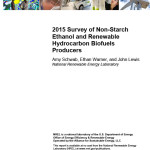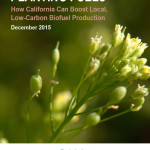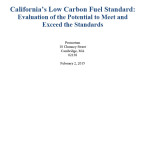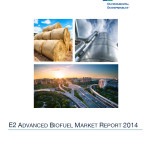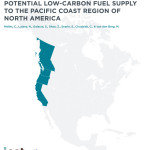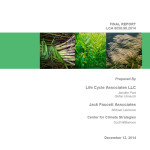What is Biodiesel?
Biofuel terminology can be confusing for many people. Some terms are used interchangeably, and some connote completely different fuel and feedstocks, so you are not alone if you’ve wondered what the differences are.
Take biodiesel, a type of biofuel made from oils. Most people have seen – or smelled – a diesel vehicle that has been modified to run on used vegetable oil, commonly the stuff used to make French fries at fast food restaurants. But you can make biodiesel from a wide variety of sources.
If used responsibly, some, such as used cooking oil, animal fat, algae and crop byproducts can offer clean alternatives to oil. Others, particularly crops grown specifically for their oil (palm and soy), have stirred questions about the use of agricultural land for fuel.
My organization, E2, promotes the use of biofuels that deliver environmental benefits over oil. We want to see all fuel types subjected to a rigorous lifecycle analysis to determine environmental impacts, and enforcement of sustainability criterion so we can be sure the production of biofuel feedstocks does not harm us socially, financially or environmentally.
We would like to see fuel regulations that move us toward the most environmentally beneficial fuels. This is why we support the Low Carbon Fuel Standard, which includes these analyses and criterion to reward the best fuels while limiting those, such as corn ethanol, that cause more harm than good.
According to the latest numbers used by California Air Resources Board, biodiesel from non-food sources (like recycled oils) are the most sustainable. In fact, biodiesel from corn oil (a non-edible part of corn) reduces greenhouse gas emissions by a whopping 96%. From E2’s perspective, we consider any biodiesel that achieves a 50% reduction of greenhouse gases or better an advanced biofuel, so this typically encompasses biodiesel made from non-virgin oil feedstocks.
Biodiesel can be a replacement or additive to diesel fuel that has been in large-scale production in the United States since 2005. Biodiesel can be used in its pure form with some engine modifications, but typically is used as an additive to reduce greenhouse gas emissions. Low blends like 5% biodiesel are acceptable in common diesel cars. Biodiesel uses transesterification to produce a long chain of fatty acids. This is not to be confused with renewable diesel, which uses the same feedstocks but a different conversion process for a different final composition. I will discuss renewable diesel in a future post.
This year the Renewable Fuel Standard, a federal requirement for the blending of greater amounts of biofuels, calls for 1.28 billion gallons of biodiesel. About one-half of this comes from recycled sources like waste grease and other feedstocks shown to have significant benefits over oil. We actually have the capacity to make even more biodiesel, but we want to make sure additional demand does not have unintended effects on food prices.
What I like about biodiesel is that it’s a fuel that is here today, and has a critical role to play in meeting goals like the Renewable Fuel Standard and the Low Carbon Fuel Standard. If we maintain and strengthen the sustainability standards in these policies, we can help ensure the biodiesel industry shifts away from feedstocks that strain our food supplies and drive deforestation in favor of those which are proven to have significant benefits over petroleum.
We’ve got the infrastructure. There are nearly three billion gallons of biodiesel production capacity in the United States. Companies like Solazyme, which is working to replace many petroleum products, can test consumer responses through biodiesel sales. I’m sure that many of you have biodiesel already available for sale at a fueling station near you.
You can learn more about biodiesel companies and marketers in your area here on Fueling Growth, or see a comprehensive list of locations at www.biodiesel.org.
Cover photo by Steve Jurvetson (Flickr) [CC-BY-2.0 (http://creativecommons.org/licenses/by/2.0)], via Wikimedia Commons
Filed in: Blog • Mary Solecki







